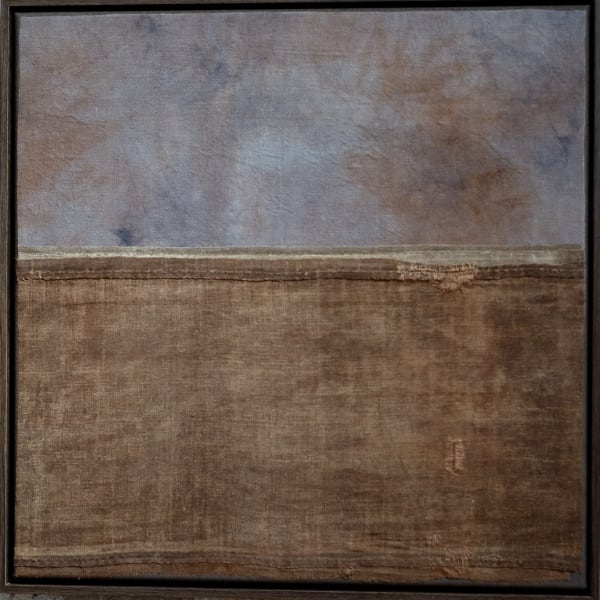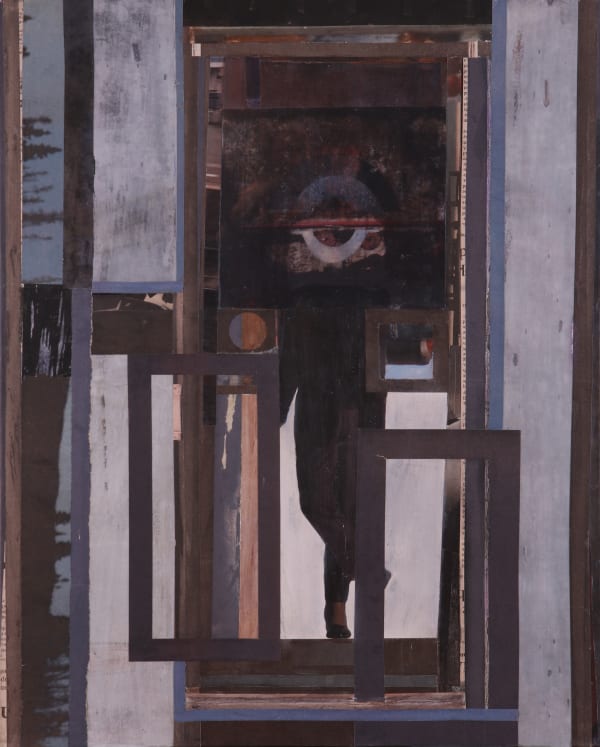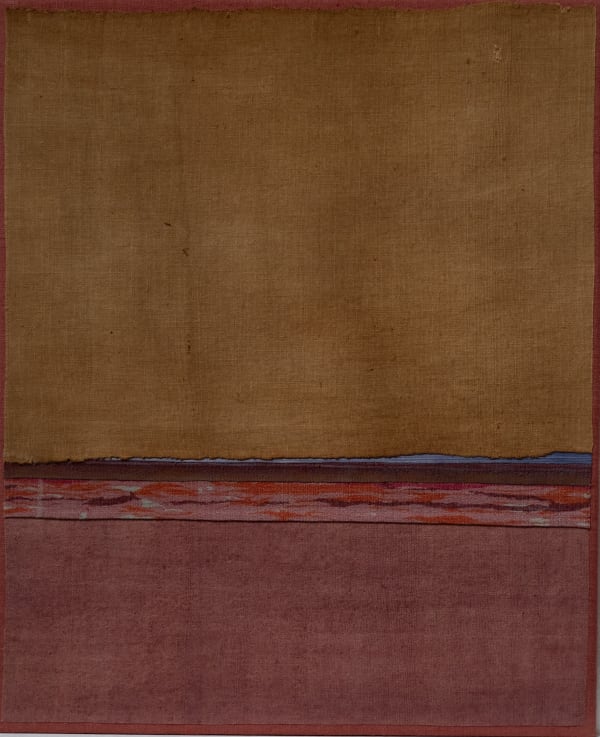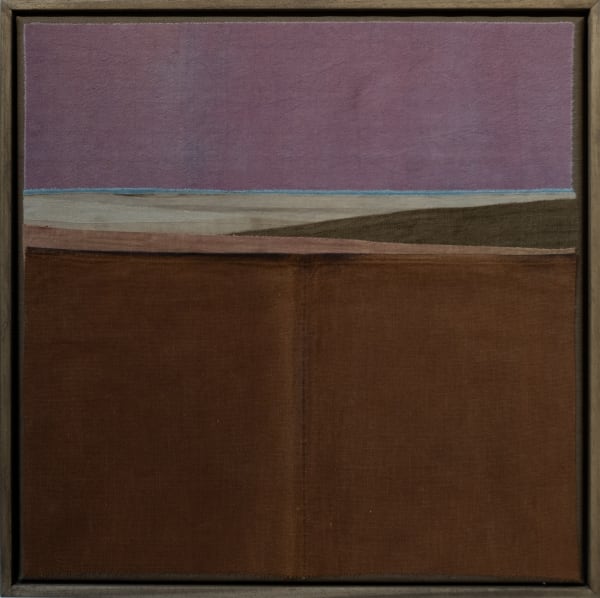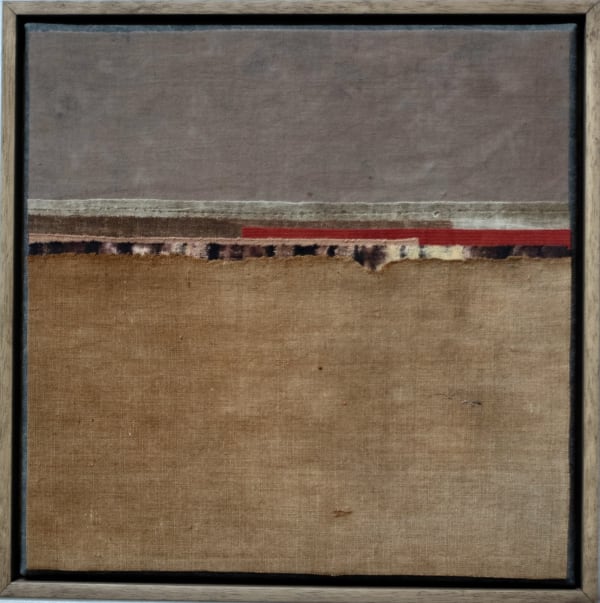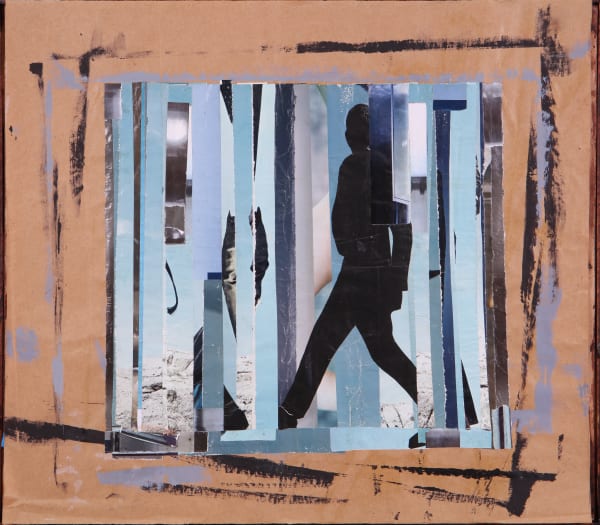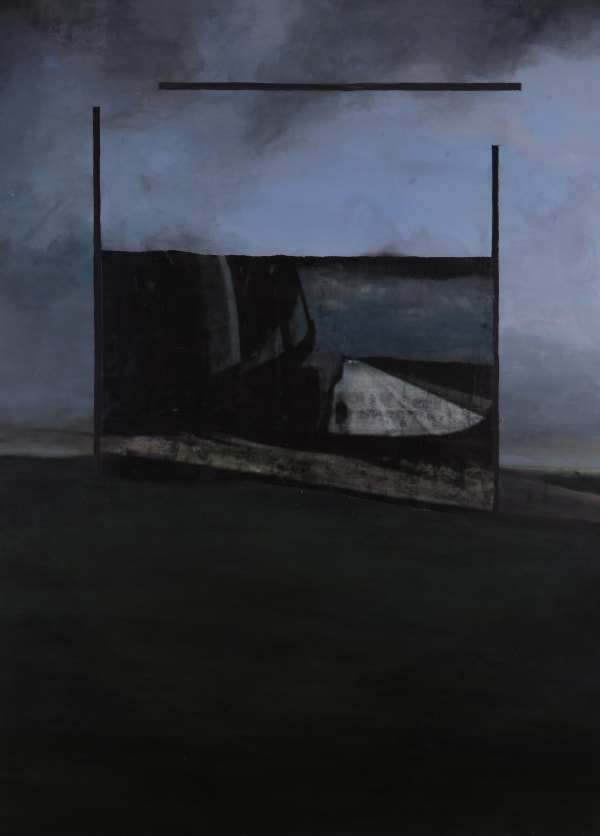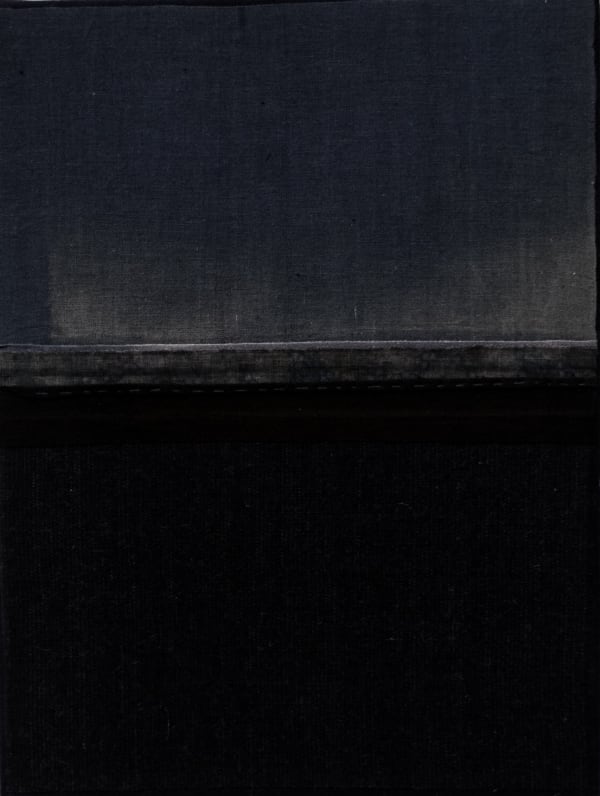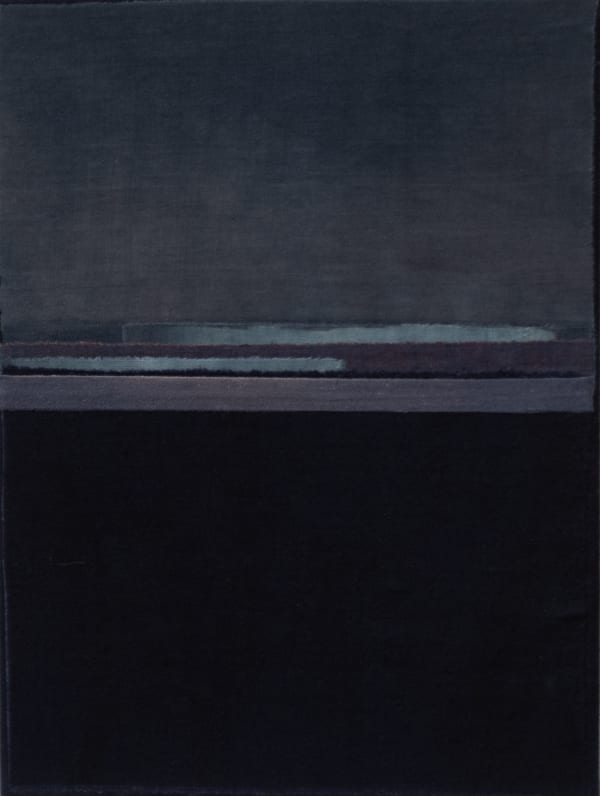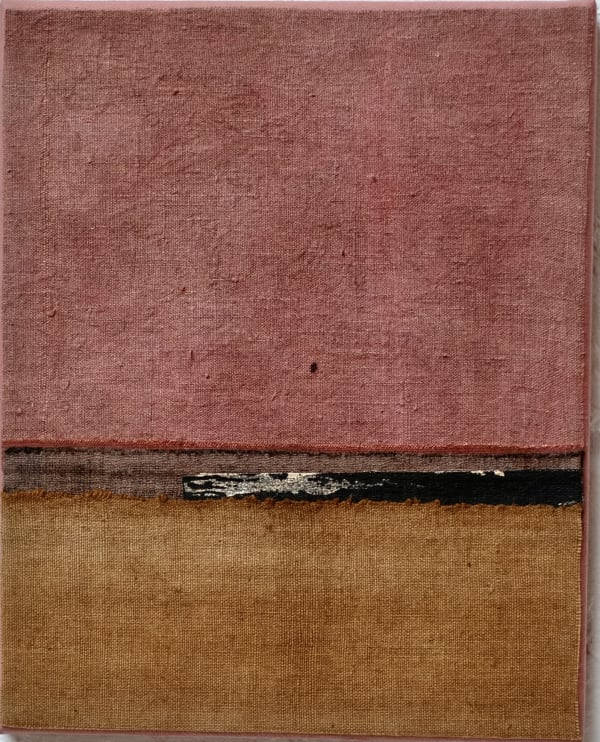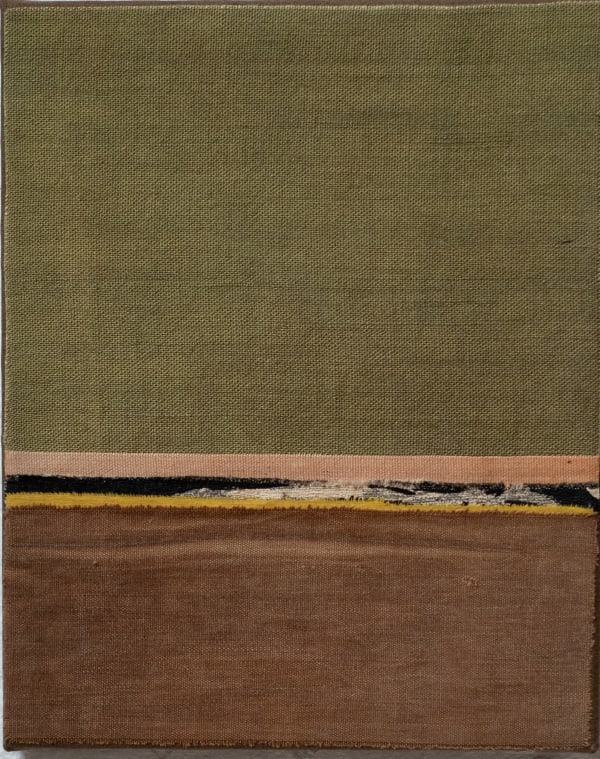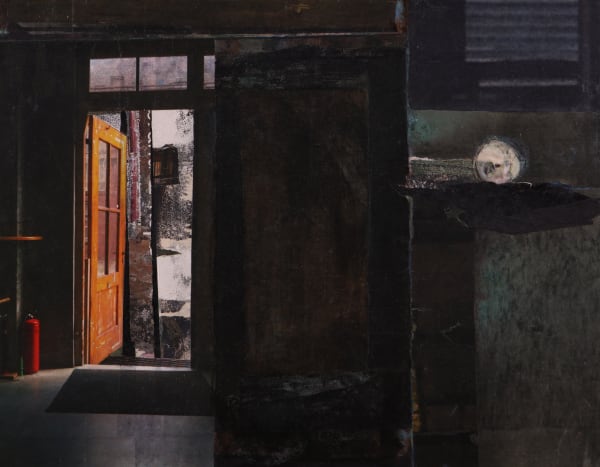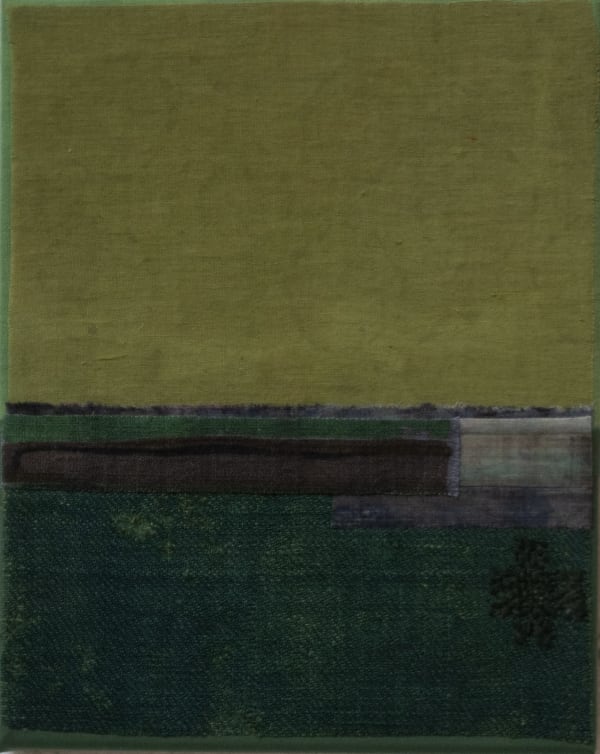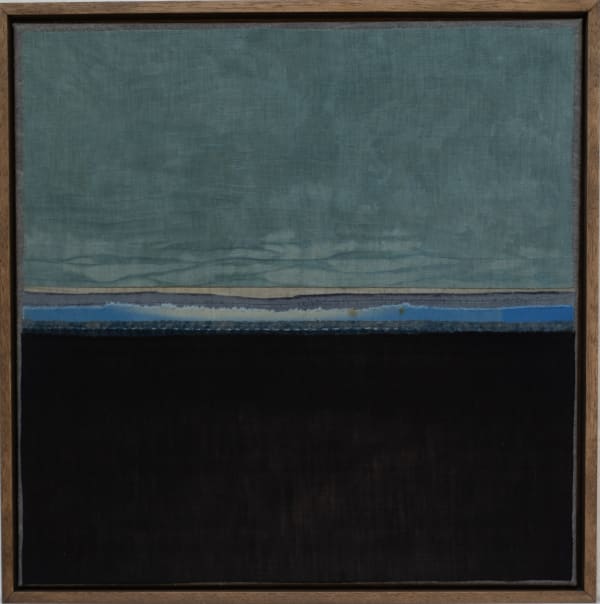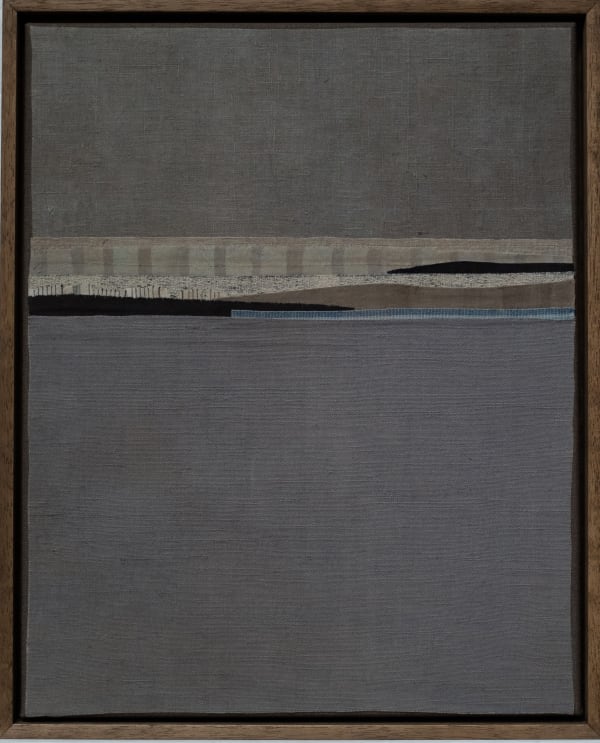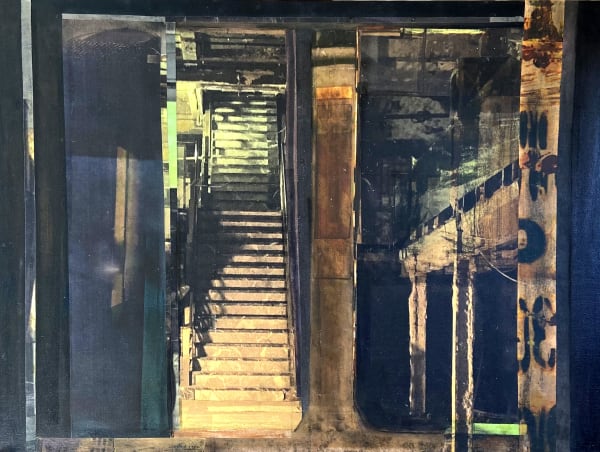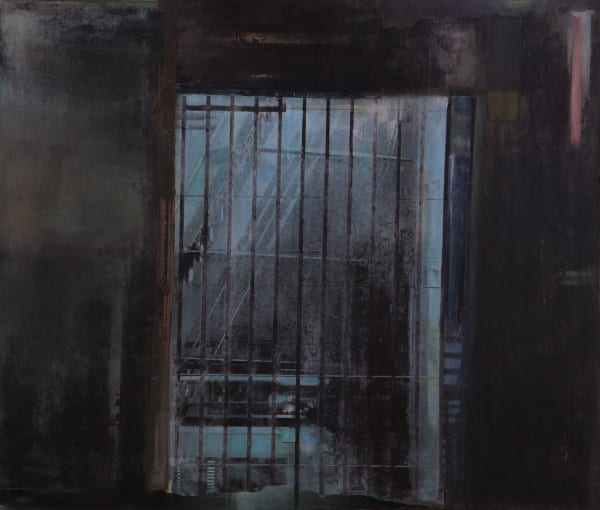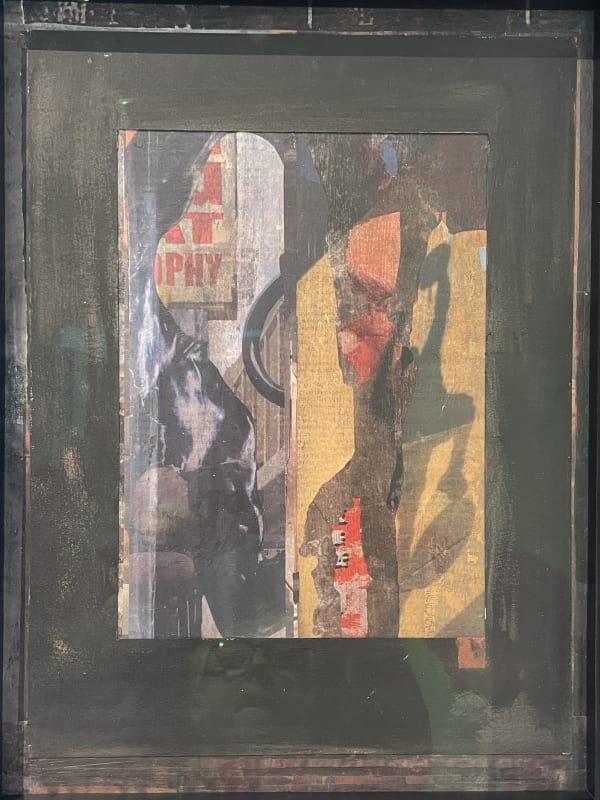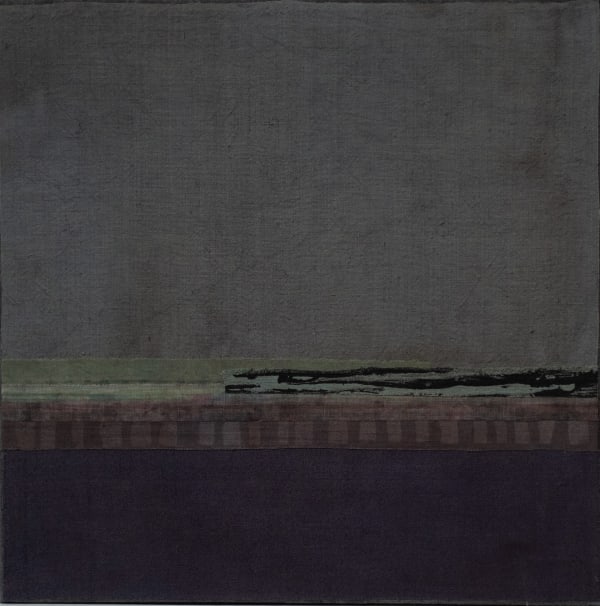-
 Anna van OosteromUntitled, 2021Collage, acrylic paint and pastel on canvas70.5 x 50 cmSigned and dated versoReserved
Anna van OosteromUntitled, 2021Collage, acrylic paint and pastel on canvas70.5 x 50 cmSigned and dated versoReserved -
 Mary NordenSomewhere 1, 2024Vintage fabric on canvas30 x 24 cm + frameSigned and dated verso£850.00
Mary NordenSomewhere 1, 2024Vintage fabric on canvas30 x 24 cm + frameSigned and dated verso£850.00 -
 Mary NordenDrama at Nightfall, 2023Vintage fabric on canvas60 x 60 cmSigned and dated versoSold
Mary NordenDrama at Nightfall, 2023Vintage fabric on canvas60 x 60 cmSigned and dated versoSold -
 Anna van OosteromUntitled, 2018Transfer, collage on canvas + frame61 x 45 cmSeries: SubwaySigned and dated versoSold
Anna van OosteromUntitled, 2018Transfer, collage on canvas + frame61 x 45 cmSeries: SubwaySigned and dated versoSold
-
 Anna van OosteromUntitled, 2018Transfer on canvas61 x 45 cmSigned and dated versoSold
Anna van OosteromUntitled, 2018Transfer on canvas61 x 45 cmSigned and dated versoSold -
 Anna van OosteromUntitled, 2019Transfer and acrylic paint on canvas121 x 85.5 cmSeries: SubwaySigned and dated verso£2,900.00
Anna van OosteromUntitled, 2019Transfer and acrylic paint on canvas121 x 85.5 cmSeries: SubwaySigned and dated verso£2,900.00 -
 Anna van OosteromUntitled, 2022Collage, transfer, acrylic paint, chalk pastel on canvas50 .8 x 40.6 cmSigned and dated verso£950.00
Anna van OosteromUntitled, 2022Collage, transfer, acrylic paint, chalk pastel on canvas50 .8 x 40.6 cmSigned and dated verso£950.00 -
 Mary NordenLast Night I dreamt of Distant Places, 2023Vintage fabric on canvas60 x 50 cmSigned and dated versoSold
Mary NordenLast Night I dreamt of Distant Places, 2023Vintage fabric on canvas60 x 50 cmSigned and dated versoSold
-
 Mary Norden, Leaving the Day, 2023
Mary Norden, Leaving the Day, 2023 -
 Mary NordenFrom Where I Stand, 2023Vintage fabric fragments on canvas50 x 50 cmSigned and dated versoSold
Mary NordenFrom Where I Stand, 2023Vintage fabric fragments on canvas50 x 50 cmSigned and dated versoSold -
 Mary NordenFrom Where I Stand 7, 2024Vintage fabric on canvas40 x 40 cm + frameSigned and dated versoSold
Mary NordenFrom Where I Stand 7, 2024Vintage fabric on canvas40 x 40 cm + frameSigned and dated versoSold -
 Mary NordenOld View Still Moment, 2023Vintage fabric on canvas50 x 50 cm + frameSigned and dated verso£1,450.00
Mary NordenOld View Still Moment, 2023Vintage fabric on canvas50 x 50 cm + frameSigned and dated verso£1,450.00
-
 Mary NordenA Dash of Blue, 2023Vintage fabric on canvas50 x 40 cmSigned and dated versoSold
Mary NordenA Dash of Blue, 2023Vintage fabric on canvas50 x 40 cmSigned and dated versoSold -
 Anna van OosteromUntitled, 2020Collage on brown wrapping paper, acrylic paint57 x 60 cm + black frameSigned and dated verso£450.00
Anna van OosteromUntitled, 2020Collage on brown wrapping paper, acrylic paint57 x 60 cm + black frameSigned and dated verso£450.00 -
 Anna van OosteromUntitled , 2020Transfer and acrylic paint on canvas122 x 91 cm£1,600.00
Anna van OosteromUntitled , 2020Transfer and acrylic paint on canvas122 x 91 cm£1,600.00 -
 Anna van OosteromUntitled (triptych), 2019Collage on canvas61 x 95 cmSeries: Subway SeriesSigned and dated versoSold
Anna van OosteromUntitled (triptych), 2019Collage on canvas61 x 95 cmSeries: Subway SeriesSigned and dated versoSold
-
 Mary Norden, Seaside Blues, 2024
Mary Norden, Seaside Blues, 2024 -
 Mary Norden, A Silence in Blue, 2024
Mary Norden, A Silence in Blue, 2024 -
 Mary NordenSolitude, 2024Vintage fabric on canvas40 x 30 cm + frameSigned and dated versoSold
Mary NordenSolitude, 2024Vintage fabric on canvas40 x 30 cm + frameSigned and dated versoSold -
 Mary NordenSomewhere, 2024Vintage fabric on canvas30 x 24 cm + frameSigned and dated versoSold
Mary NordenSomewhere, 2024Vintage fabric on canvas30 x 24 cm + frameSigned and dated versoSold
-
 Mary NordenSomewhere 2, 2024Vintage fabric on canvas30 x 24 cm + frameSigned and dated verso£695.00
Mary NordenSomewhere 2, 2024Vintage fabric on canvas30 x 24 cm + frameSigned and dated verso£695.00 -
 Mary NordenSomewhere 3, 2024Vintage fabric on canvas30 x 24 cm + frameSigned and dated versoSold
Mary NordenSomewhere 3, 2024Vintage fabric on canvas30 x 24 cm + frameSigned and dated versoSold -
 Mary NordenSilence, 2024Vintage fabric on canvas50 x 50 cm + frameSigned and dated verso£1,800.00
Mary NordenSilence, 2024Vintage fabric on canvas50 x 50 cm + frameSigned and dated verso£1,800.00 -
 Anna van OosteromUntitled (Observations in Transfer 3), 2017Collage and transfer on canvas (framed)
Anna van OosteromUntitled (Observations in Transfer 3), 2017Collage and transfer on canvas (framed)
In 2020, this work won the Barbara Hodgson award for collage. in National Art Club, Manhatten, New York.50 x 40.5 cm + frameSigned and dated verso£1,145.00
-
 Mary NordenSomewhere 4, 2024Vintage fabric on canvas30 x 24 cm + frameSigned and dated versoSold
Mary NordenSomewhere 4, 2024Vintage fabric on canvas30 x 24 cm + frameSigned and dated versoSold -
 Mary NordenOld Memories, 2024Vintage fabrics on canvas40 x 40 cmSigned and dated verso
Mary NordenOld Memories, 2024Vintage fabrics on canvas40 x 40 cmSigned and dated verso -
 Anna van OosteromUntitled, 2019Transfer and acrylic paint on canvas50 x 60 cmSigned and dated verso£950.00
Anna van OosteromUntitled, 2019Transfer and acrylic paint on canvas50 x 60 cmSigned and dated verso£950.00 -
 Mary Norden, Spring Greens, 2024
Mary Norden, Spring Greens, 2024
-
 Anna van OosteromUntitled, 2023Transfer on board with acrylic paint and chalk pastel50.8 x 40.6 cm.Signed and dated verso£1,145.00
Anna van OosteromUntitled, 2023Transfer on board with acrylic paint and chalk pastel50.8 x 40.6 cm.Signed and dated verso£1,145.00 -
 Mary NordenThe Day Begins at Night, 2024Vintage fabrics on canvas50 x 50 cm + frameSigned and dated versoSold
Mary NordenThe Day Begins at Night, 2024Vintage fabrics on canvas50 x 50 cm + frameSigned and dated versoSold -
 Mary NordenShore Line, 2024Vintage fabrics on canvas50 x 40 cm + frameSigned and dated versoSold
Mary NordenShore Line, 2024Vintage fabrics on canvas50 x 40 cm + frameSigned and dated versoSold -
 Anna van OosteromUntitled, 2024Transfer on canvas with acrylic paint and chalk pastel45 x 61 cmSigned and dated versoSold
Anna van OosteromUntitled, 2024Transfer on canvas with acrylic paint and chalk pastel45 x 61 cmSigned and dated versoSold
-
 Anna van OosteromUntitled, 2021Transfer on canvas with chalk pastelSigned and dated verso£1,700.00
Anna van OosteromUntitled, 2021Transfer on canvas with chalk pastelSigned and dated verso£1,700.00 -
 Mary NordenThe Plough, 2024Vintage fabric on canvas30 x 24 cm + frameSigned and dated versoSold
Mary NordenThe Plough, 2024Vintage fabric on canvas30 x 24 cm + frameSigned and dated versoSold -
 Anna van OosteromUntitled, 2018Collage on boardWork: 40 x 30 cm
Anna van OosteromUntitled, 2018Collage on boardWork: 40 x 30 cm
Framed 49.5 x 39.5 x 4.5 cm
Signed and dated verso£800.00 -
 Mary Norden, Nightfull across the Levels, 2024
Mary Norden, Nightfull across the Levels, 2024
'TORN'
This exhibition titled "Torn" showcases the unique artistic expressions of two talented women, Anna van Oosterom and Mary Norden, who both employ the technique of tearing materials to fashion powerful images.
Anna van Oosterom has lived and worked in places across the world, far away from her native country, the Netherlands. No matter how exotic and exciting that sounds, it can also be emotionally taxing and isolating. Anna reveals that she is always in a state of observation as an outsider, reflecting upon her own underlying sense of aloneness. It is also innate to her personality which conveys a quiet demeanour, her gaze attentive, unsurprisingly seeking expression in art. All of her works are untitled, leaving the viewer alone to perceive without suggestion.
A haunting image of a seated girl, isolated, seemingly reflected in a mirrored wall, colour pale blue; to the left a recess with steps leading up to a white gold panelled door. Leading to where?
A bleak landscape, sky steel blue, clouds black; a panel erected on the horizon with another landscape leading to another place beyond.
Travellers, arriving or departing, glimpsed between walls, shadows or ghosts, passing trains, pathways leading up or down, disconnected or interconnected, perhaps.
The artist admits that she finds herself drawn to such desolate places as underground and railway stations. She’s fascinated how, in unfamiliar surroundings, a person can seem cloaked in loneliness, trying to find a private spot to distance themselves from the other commuters. She notes that the same loneliness envelopes people on the move everywhere in the world. Her compositions portray surreal scenes of deserted streets, the enigmatic depths of the New York subway, remote railway stations in the English countryside. They evoke feelings of isolation and disquiet and, as in dreams, of disorientation. Some of the images bring to mind dream scenes by film maker Andrei Tarkovsky or perhaps one of Vermeer’s paintings,‘The Little Street’.
Anna van Oosterom’s artistic practice involves torn pieces. She tears paper to construct paintings made with collage, transfer and paint. With meticulous care, she blends various dissociated images to form a cohesive whole, utilising a technique that smooths down the surface to reveal a single, seamless image.
Similarly, Mary Norden’s creative process involves collecting fragments of worn and faded textiles imbued with the marks of time. Sometimes she alters and manipulates the colours to create a stormy mood. She says, A new picture always starts with a single piece of fabric; it’s the seed of the collage where the story begins. What can seem unpromising, well worn and stained, and not fit for purpose, can reveal wonderful surprises… This act initiates the narrative and transforms tatters and old rags into captivating works of art, each capturing an enchanting, mystical moment once glimpsed, somewhat reminiscent of Rothko’s meditative colour field abstract paintings.
Mary Norden works on a small scale and on the flat. Her studio is a wonderful refuge away from the busyness and the noise of our stressful world. Here, time itself seems to vanish in an involuntary meditation of absorption in an emerging image. With these old materials, the artist “paints” scapes of land and sea - water red overcast by brown shadowy cloud, or the earth dark under a sky of vivid green. Colours are reversed to dramatic effect. One is looking out across the land to something perceived in the distance, perhaps a low wall with an opening leading to the immensity beyond. A way home? All of these works convey stillness, the depth of a quiet moment.
The word ‘torn’ carries multifaceted psychological connotations. One can be torn between conflicting desires or emotions, as in Hamlet’s dilemma between being and not being. To tear is to rip apart or rent asunder, undoing what was once whole. Yet, from destruction or desolation emerges the possibility of creation. As when the shell of a seed cracks open and a tiny root emerges, something new is growing and taking shape; it may be unforeseen, unimagined, a thing of wonder.
In the hands of these two artists of great sensibility, seemingly discarded materials are refashioned into mysterious, contemplative images. The viewer is invited to discover the poetic narratives inherent in each fragment, transcending the boundaries of conventional artistic expression.
~ Vivienne Roberts 2024
Exploring the poetic fragments of the human experience, the exhibition ‘TORN’ unveils the artistic mastery of ANNA VAN OOSTEROM and MARY NORDEN.
VIVIENNE ROBERTS PROJECTS is thrilled to announce the forthcoming exhibition, ‘TORN’, showcasing the captivating works of artists Anna van Oosterom and Mary Norden. Curated by Vivienne Roberts, this exhibition promises to immerse audiences in a world of enigmatic narratives, emotional depth, and artistic ingenuity.
‘TORN’ invites viewers to discover the unique artistic expressions of two exceptional women who employ the technique of tearing materials to fashion powerful images.
Anna van Oosterom, hails from the Netherlands, but having lived and worked across the world, she brings forth a sense of observation as an outsider, reflecting upon themes of aloneness and isolation. Her compositions, untitled and evocative, transport viewers into surreal landscapes of desolation and disquiet. From the depths of New York's subway to remote English railway stations, van Oosterom's torn pieces blend dissociated images to reveal seamless, thought-provoking images, evoking film scenes by Andrei Tarkovsky.
Similarly, Mary Norden's creative process revolves around collecting worn and faded textiles infused with the marks of time to create captivating pictures. She transforms tatters and old rags into enchanting works of art, each capturing a mystical moment reminiscent of Rothko's meditative colour field abstract paintings. Norden’s small-scale works convey a profound sense of stillness, inviting viewers to immerse themselves in quiet contemplation.
The title of the exhibition ‘TORN’ carries multifaceted psychological connotations, evoking themes of conflict, destruction, and creation. Through the hands of these two artists, seemingly discarded materials are refashioned into mysterious, contemplative images, inviting viewers to transcend the boundaries of conventional artistic expression.
"We are excited to present the works of Anna van Oosterom and Mary Norden in our upcoming exhibition, ‘TORN’,” says curator Vivienne Roberts. "Their ability to transform torn fragments into poetic narratives is truly remarkable."
The exhibition will open on April 3, 2024, from 2pm to 8pm at Vivienne Roberts Projects, located at The Bindery, 53 Hatton Garden, London EC1N 8HN.
The exhibition will run until May 9, 2024.
For press inquiries, please contact press@viviennerobertsprojects.com.
Contact:
Vivienne Roberts
Vivienne Roberts Projects
Email: press@viviennerobertsprojects.com
Phone: +44 7971 172 715



